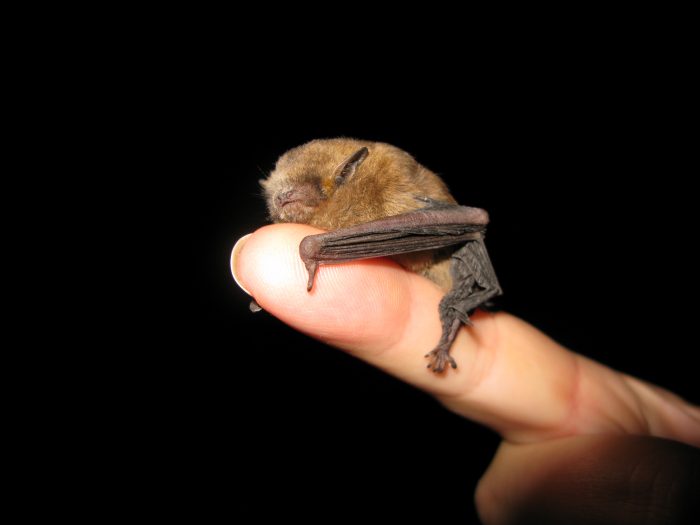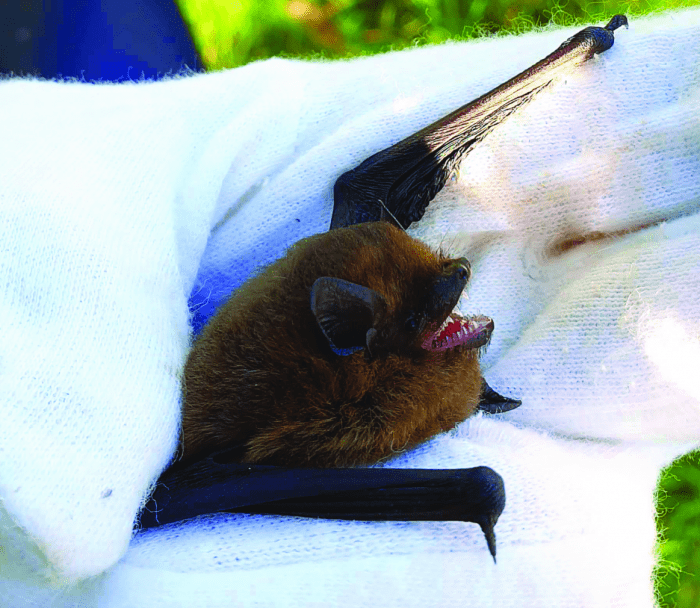

Soprano Pipistrelle. Credit: pipsqueak via openverse CC BY-SA 2.0
A family of bats live the bat boxes located above the Brisley and Woodland Rooms here at the Centre. The bats enter the boxes by crawling through the narrow slits. Bat boxes need to be draught free as bats will not use them if they are draughty.
There are eighteen bat species resident in Britain and they are all protected under the Wildlife and Countryside Act. Fourteen of these bat species have been recorded in Kent.
The two most abundant species are the Common Pipistrelle (Pipistrellus Pipistrellus) and the Soprano Pipistrelle (Pipistrellus Pygmaeus). Both species look similar and are distinguished by the different frequency of their echolocation calls.

Common Pipistrelle. Credit: Tara Hall
Bats mate during the autumn. Males use special calls consisting of purrs, clicks and buzzing to attract a mate.
The females store the male’s sperm whilst hibernating over the winter and release it to their ovaries in the spring. Pregnant female bats gather in maternity roosts to have their babies.
Most bats give birth to one pup and they feed the pup their milk for around five weeks by which time the young bat is able to fly and catch insects to feed itself.
Bat Conservation Trust – www.bats.org.uk
Kent Bat Group – www.kentbatgroup.org.uk
Kent Bat Group on Facebook – www.facebook.com/groups/1597357360515616
Kent Bat Group on Twitter – www.twitter.com/KentBatGroup

The information board is kindly sponsored by The Mayor of Ashford’s Charity and International Biodiversity Consultants Ltd
